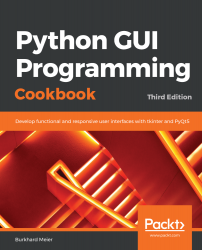MySQL has a very nice GUI that we can download for free. It's called MySQL Workbench.
In this recipe, we will successfully install Workbench and then use it to run SQL queries against the GuiDB we created in the previous recipes.


 Free Chapter
Free Chapter












MySQL has a very nice GUI that we can download for free. It's called MySQL Workbench.
In this recipe, we will successfully install Workbench and then use it to run SQL queries against the GuiDB we created in the previous recipes.
In order to use this recipe, you will need MySQL database we developed in the previous recipes. You will also need a running MySQL server.
We can download MySQL Workbench from the official MySQL website: https://dev.mysql.com/downloads/workbench/.
Let's look at how we can perform this...